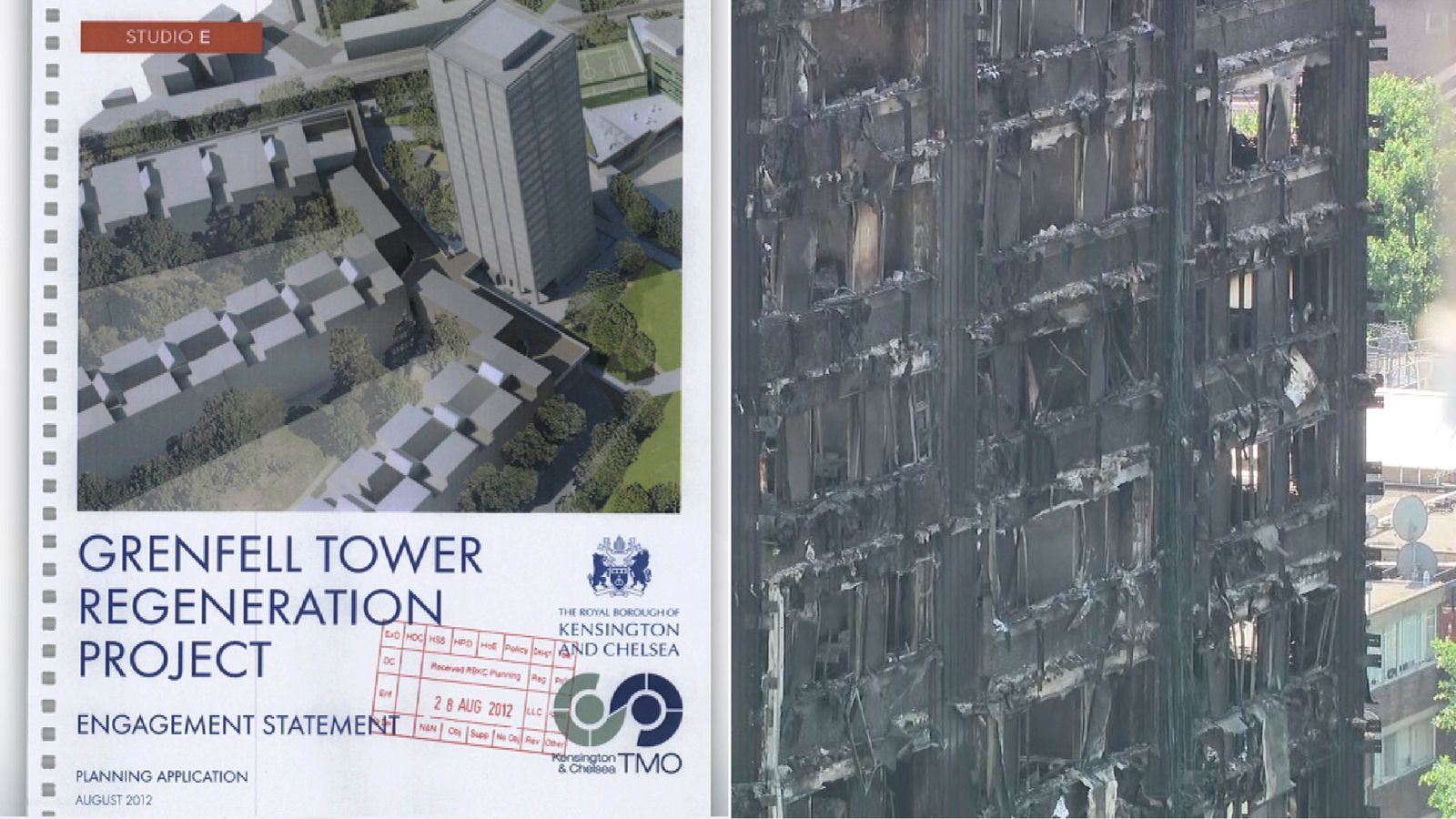Toxic gases released during Grenfell Tower fire may have caused some deaths.
The insulation used at Grenfell Tower was made of Polyisocyanurate (PIR), rigid plastic foam sandwiched between two sheets of aluminium foil that supplied in 15cm-thick boards.
Experts say insulation boards on the outside of Grenfell Tower may have filled flats with hydrogen cyanide when they caught fire.
11:11, UK, Thursday 22 June 2017

Grenfell fire released deadly gas
By Paul Kelso, Health Correspondent
Insulation boards fitted to the outside of Grenfell Tower gave off highly toxic hydrogen cyanide gas which may have contributed to the deaths of some of the 79 confirmed victims.
Fire toxicity experts have told Sky News the insulation boards installed during a refurbishment of the tower produce the deadly gas when they burn, and their positioning meant every flat could have been filled with enough gas to kill those inside.
At least three of those injured in the fire have been treated with an antidote for hydrogen cyanide poisoning in hospital, and the number of those affected may be higher.
The gas could have incapacitated some residents, but establishing its role in the cause of death may be impossible because of the condition of the victims.
King's College Hospital confirmed to Sky News that three of the 12 patients it received from the fire were treated with the hydrogen cyanide antidote Cyanokit.
Four other hospital trusts declined to comment on the treatment administered to those injured in the fire.
An initial 68 patients were taken to six hospitals across London, with 18 receiving critical care and some put into induced comas to aid in the recovery of damaged airways.
As of Wednesday morning, 10 people were still being treated in four hospitals, six of them in critical care.
The insulation used at Grenfell Tower was made of Polyisocyanurate (PIR), rigid plastic foam sandwiched between two sheets of aluminium foil that supplied in 15cm-thick boards.
The PIR itself is flammable, but the aluminium foil is intended to disperse flames and prevent it catching fire.
The boards were fitted against the exterior wall of Grenfell Tower, behind the cladding that was installed to improve the appearance of the building.
Richard Hull, professor of chemistry and fire science at the University of Central Lancashire, told Sky News that the gas produced by the insulation when it burned may have been deadly.
"The outside wall of the building had 150mm of PIR foam (fitted), and once the fire had spread to that every flat would have its own source of PIR foam, which would have produced enough hydrogen cyanide to kill all the people in that flat," he said.

Different cladding promised at Grenfell
Professor Hull co-authored a peer-reviewed study in 2011 into the fire toxicity of six insulation materials which was published in the Energy & Building journal. The study established that PIR was the most toxic.
The report also warned that while modern, lightweight building materials are cheaper to produce and offer improved thermal insulation, they pose a greater risk than traditional materials in the event of fire.
Professor Hull said the warnings in his report should have been heeded.
"It's been an accident waiting to happen and unfortunately we've got to the stage now where the accident has happened and we're standing here saying 'I told you so'.
"It would have been much better if people had listened to us earlier on when we published the report."
The insulation board was manufactured by Celotex, who say that if fitted correctly it is the first PIR insulation board that can meet regulations for use on buildings above 18m (59ft) tall.
When contacted for comment, Celotex referred Sky News to a statement on its website published last Friday.
It said: "As with the rest of the nation our thoughts continue to be with those affected by the terrible fire at Grenfell Tower in London.
"On Wednesday, as soon as we were able to, we confirmed that our records showed a Celotex product (RS5000) was purchased for use in refurbishing the building.
"This product has a fire rating classification of Class 0, in accordance with British Standards.
"We will of course assist the relevant authorities fully with any enquiries they have."




